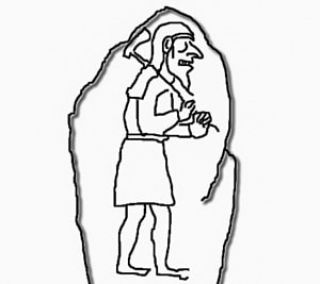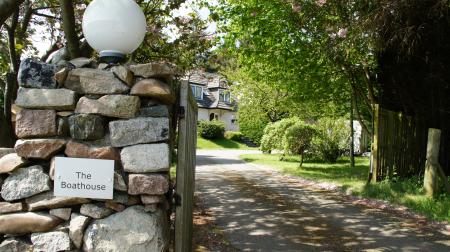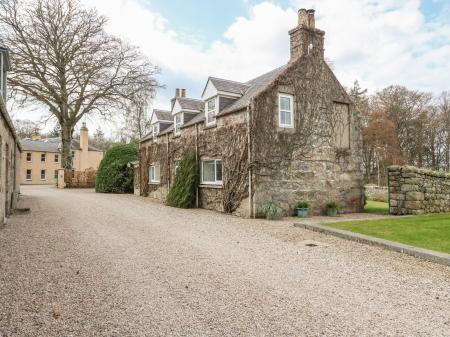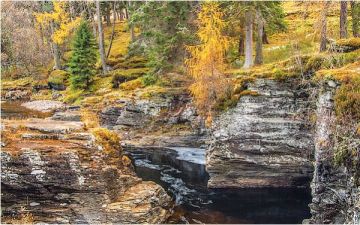
The so-called Rhynie Man carving shows a solitary man carrying an axe, or similar tool over one shoulder. It is very unusual in Pictish carving to see a single figure like this, with no other ornamentation.
The figure is shown in profile. He wears a loose tunic which falls below his knees, and leggings, or pointy shoes. The man's head is very striking, with a large, protruding jaw, sharp triangular teeth, pointed beard, and large, beak-like nose.
The carving may represent a Pictish leader, a legendary hero, or perhaps it is a Christian representation of St Matthew. The man is just over one metre high and faces right. He wears a headdress - or perhaps has an elaborate haircut, possibly a tonsure.
There are two parallel lines running behind the figure. These are probably remnants from an earlier carving that was destroyed when the figure was carved. The head is disproportionately large to the rest of the body. The axe which the figure bears over his right shoulder is on the end of a very slender shaft, which may mean it is ceremonial or perhaps was a symbol of authority.
The Rhynie Man was taken to the offices of the Grampian Regional Council offices at Woodhill House, Westburn Road, Aberdeen, where it can be seen during office hours. If you can't make it to Aberdeen, however, a replica of the stone can be seen in the Rynie village school.
 We've 'tagged' this attraction information to help you find related historic attractions and learn more about major time periods mentioned.
We've 'tagged' this attraction information to help you find related historic attractions and learn more about major time periods mentioned.




